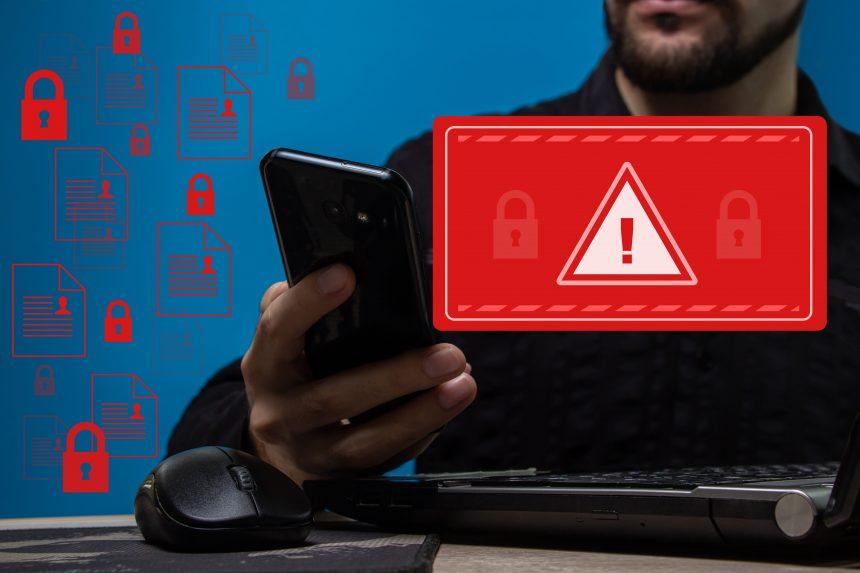PlainGnome is a sophisticated Android-specific spyware that emerged in 2024. This malicious software is designed to covertly record and steal sensitive information from infected devices. PlainGnome has been linked to Gamaredon, also known as Primitive Bear or Shuckworm, a Russian state-backed threat actor tied to the Federal Security Service (FSB) of the Russian Federation.
This spyware has primarily targeted Russian-speaking individuals in former USSR states, including Kazakhstan, Kyrgyzstan, Tajikistan, and Uzbekistan. Leveraging advanced tactics and social engineering, PlainGnome represents a significant threat to user privacy and device security.
Remove annoying malware threats like this one in seconds!
Scan Your Computer for Free with SpyHunter
Download SpyHunter now, and scan your computer for this and other cybersecurity threats for free!
How PlainGnome Operates
PlainGnome spyware infiltrates Android devices by masquerading as legitimate applications, such as image gallery apps. Its infection process follows a two-phase chain:
- First Phase: The malware relies on the victim granting the “REQUEST_INSTALL_PACKAGES” permission. This allows the dropper to introduce the malicious payload.
- Second Phase: Victims trigger the second phase by interacting with a deceptive full-screen interface displaying a single button labeled “каталог” (“catalog” in English). Clicking this button activates the spyware installation. Different disguises or interfaces may also be used to deceive victims.
Once installed, PlainGnome requests additional permissions for accessing SMS messages, contacts, call logs, and the camera. It also employs anti-analysis techniques to detect emulated environments, complicating detection and analysis by security experts. Additionally, the spyware attempts to gain root access, further embedding itself within the system.
Capabilities and Information Stolen by PlainGnome
PlainGnome collects extensive data from infected devices, including:
- Device and Network Data: Device specifications, mobile service provider details.
- Contacts: Names, phone numbers.
- Call Logs: Types of calls (incoming/outgoing), contact names, phone numbers, duration, and timestamps.
- SMS Messages: Recipients, content, and timestamps.
- Geolocation Data: GPS data and movement history.
- Browsing History: Websites visited and online behavior.
Additionally, PlainGnome can:
- Take screenshots and photos using the device’s camera.
- Record phone calls and general audio, even when the screen is off.
The spyware’s ability to operate stealthily and collect such a broad range of data poses severe risks, including:
- Privacy breaches.
- Identity theft.
- Financial losses.
- Loss of sensitive personal or professional information.
Symptoms of Infection
Devices infected with PlainGnome may exhibit the following symptoms:
- Slower performance and overheating.
- Unauthorized modifications to system settings.
- The appearance of unknown or suspicious applications.
- Increased battery and data usage.
- Decreased internet speed.
Distribution Methods
PlainGnome spyware spreads through:
- Malicious email attachments.
- Deceptive applications on unofficial app stores or third-party websites.
- Social engineering tactics.
- Scam websites and advertisements.
Detection Names for PlainGnome
PlainGnome has been identified by major antivirus vendors under various detection names:
- DrWeb: Android.Backdoor.872.origin
- ESET-NOD32: A Variant Of Android/Monitor.Drower.H
- Fortinet: Adware/Drower!Android
- Kaspersky: Not-a-virus:HEUR:Monitor.AndroidOS.Dr
Full detection lists can be found on platforms like VirusTotal.
How to Remove PlainGnome Malware
Remove annoying malware threats like this one in seconds!
Scan Your Computer for Free with SpyHunter
Download SpyHunter now, and scan your computer for this and other cybersecurity threats for free!
Removing PlainGnome requires a systematic approach:
Step 1: Enter Safe Mode
- Power off your device.
- Press and hold the power button until the manufacturer’s logo appears.
- Release the button, then immediately press and hold the volume down button.
- Keep holding until the device boots in Safe Mode (indicated by a “Safe Mode” label in the corner).
Step 2: Uninstall Suspicious Apps
- Navigate to Settings > Apps.
- Look for unfamiliar or recently installed apps.
- Select suspicious apps and tap Uninstall.
Step 3: Revoke Administrative Permissions
- Go to Settings > Security > Device Administrators.
- Identify and deactivate permissions for suspicious apps.
Step 4: Use a Trusted Anti-Malware Tool
Install a reliable anti-malware application, such as SpyHunter, and perform a comprehensive scan. Follow the app’s instructions to quarantine or remove threats.
Step 5: Factory Reset (Optional)
If issues persist, perform a factory reset. Note that this will erase all data:
- Backup important data to a secure location.
- Navigate to Settings > System > Reset Options.
- Select Erase All Data (Factory Reset).
Preventing PlainGnome and Similar Threats
To protect against PlainGnome and other spyware, follow these preventive measures:
- Download Apps from Official Sources: Only install apps from trusted sources like the Google Play Store.
- Review App Permissions: Avoid granting excessive permissions, especially for apps that do not require them to function.
- Keep Your Device Updated: Regularly install system and security updates to patch vulnerabilities.
- Enable Google Play Protect: Activate this feature under Settings > Security to scan apps for potential threats.
- Avoid Clicking on Unknown Links: Be cautious when clicking on links in emails, messages, or advertisements.
- Use Antivirus Software: Install a reputable antivirus application and regularly scan your device.
- Monitor Device Activity: Watch for unusual behaviors, such as sudden performance drops or unknown apps appearing.
- Backup Data Regularly: Store important files securely to minimize loss in case of infection.
Conclusion
PlainGnome spyware underscores the persistent threat posed by advanced malware targeting Android devices. Its ability to infiltrate, gather, and exfiltrate sensitive information makes it a significant risk to user privacy and security.
By understanding the malware’s functionalities, symptoms, and distribution methods, users can take proactive steps to safeguard their devices. Implementing preventive measures and leveraging trusted anti-malware tools like SpyHunter can help mitigate risks and protect personal data.





